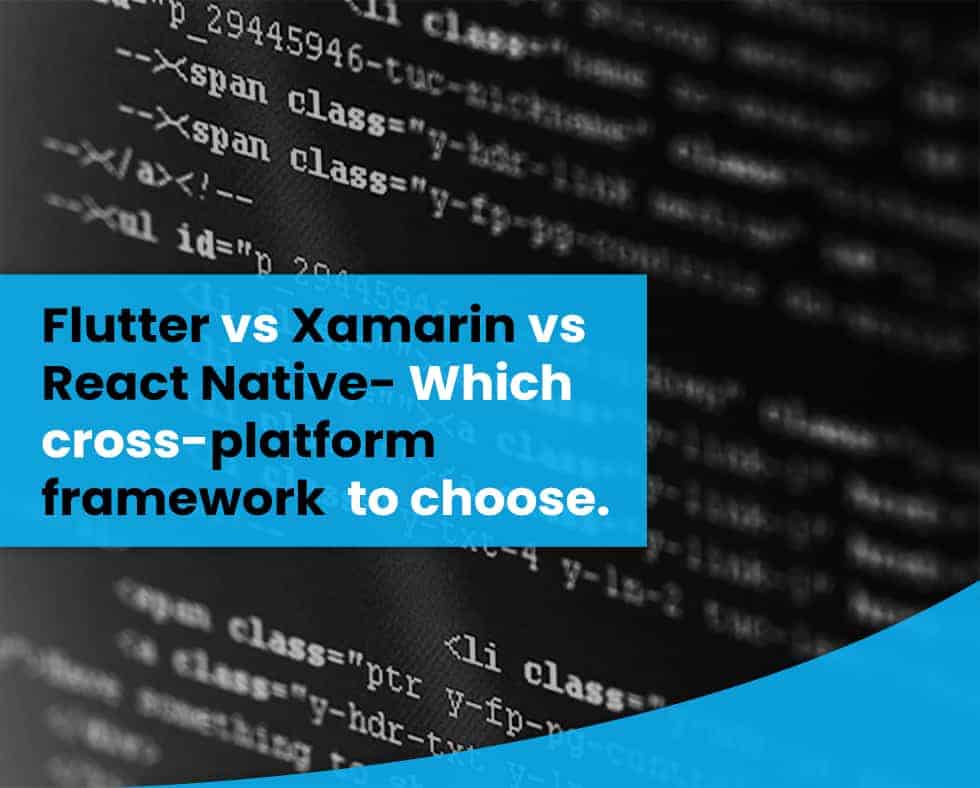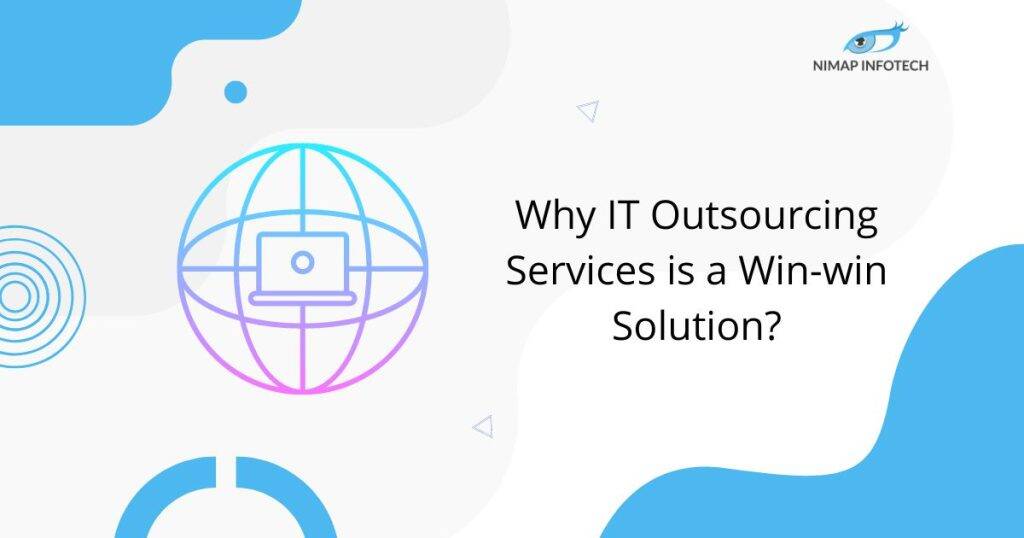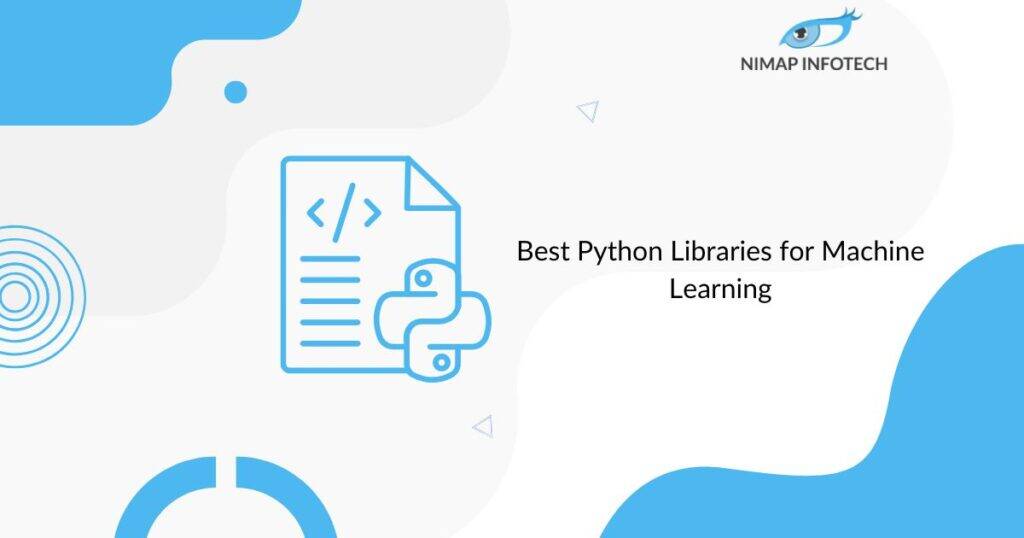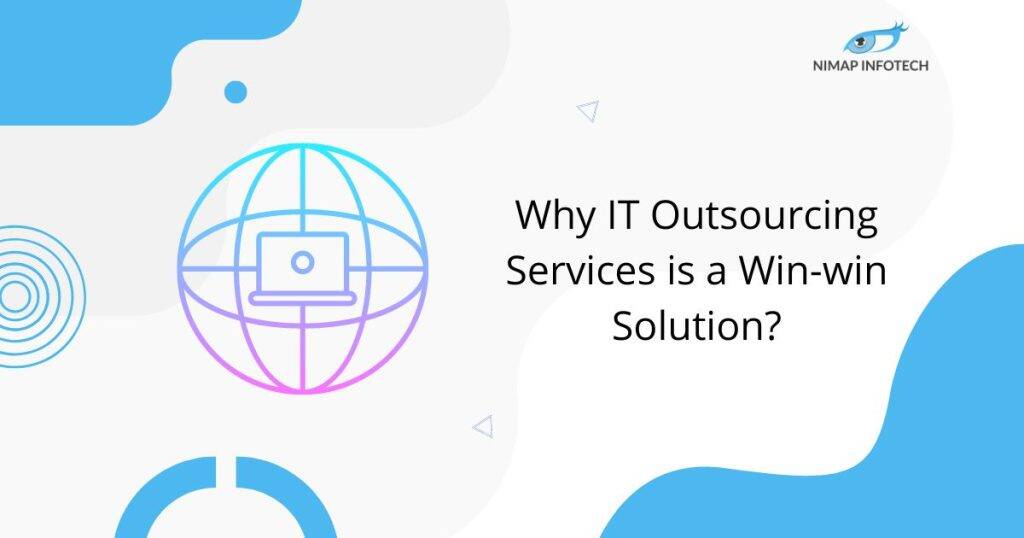According to Statista, 21.3 billion apps were downloaded from Google Play in the year 2019. However, the Apple app store dominates the consumer spending market, holding a worldwide share of 64%.
Many times, it is quite a laborious task to choose the right platform for building mobile applications. If you wish to get a mobile app developed that can run across multiple platforms, then choosing the right platform is a must. For this, cross-platform mobile app development can be the right option.
This mobile application development allows you to hit two birds with one stone! It means you can make your app available on Android and iOS simultaneously by using a single codebase. There are several cross-platform app development frameworks like Xamarin, React Native, Flutter, Ionic, Sencha, Titanium, Monocross, etc.
But, in this article, we’ll be discussing and comparing the first 3 frameworks that are arguably the most popular among all cross-platform frameworks: Flutter vs Xamarin vs React Native. This will certainly help the mobile app developers in deciding which one would be the most effective and beneficial to them as compared to others.
Xamarin
Xamarin is an open-source platform that was founded in 2011 and was acquired by Microsoft. It offers the option of code reusability and shareability with other platforms while providing access to native APIs. This cross-platform development technology uses C# programming language to create a mobile application that can work exceptionally well on platforms like iOS, Android, and Windows mobile. You can hire Xamarin developer to get hybrid mobile applications designed for your business.
Pros of Xamarin
Performance: It is known for having native-like performance levels. Xamarin.Forms assist developers to avoid difficulties and instead, design views quickly.
Complete App Development Framework: Microsoft Visual Studio, .Net, and C# are all you require to build mobile applications with Xamarin, thereby making it a complete app development framework.
Flawless User Experience: It offers strong design tools. Microsoft Visual Studio and Xamarin studio help designers to render seamless user experiences and UIs.
Codes Work on Multiple Platforms: Xamarin is the right choice for you as it enables you to create code that works on more than one platform.
Cons of Xamarin
Large App Size: For releases, Xamarin apps can add approximately 5 Mb and upto 20 Mb for debug builds. The reason for the larger app size is the translation of C# calls into native calls.
Complex Applications: Xamarin is quite a good option for apps with a simple UI. However, when it comes to creating complex mobile games or applications, using Xamarin might not be a great idea as you’ll have to spend plenty of time writing specific codes.
Platform-Oriented Code: You require knowledge in native programming languages such as Java, Swift or Kotlin as you never know when you’ve to re-write the parts of the UI in native code.
Applications made using Xamarin
- Supergiant Games
- APX
- Skulls of the Shogun
- The World Bank
- Olo
React Native
React Native is a JavaScript structure for composing robust, genuine, natively rendering mobile apps for both Android and iOS. Launched in the year 2015 by Facebook, React Native has emerged as a brilliant cross-platform mobile application development technology. This open-source platform enables developers to build iOS and Android applications with a few native components and JavaScript. In order to get a custom-tailored web application crafted for your business along with the mobile application, then all you need is to hire ReactJS developer.
Pros of React Native
User-Interface: It offers a simplified and high-quality user interface. This is the main reason why it is often called an open-source JavaScript rather than a framework. Since it has been developed and supported by Facebook, it is quite reliable.
Ready-Made Components & Access to Native Functionalities: React Native offers an enormous library of UI components, enabling faster development time. Additionally, it also provides access to native functionalities such as accelerometer, camera, etc.
Fast Refresh & Quick Reload: It allows developers to make changes to the applications immediately without having to recompile the apps. The best part is that you can fix the syntax errors and save the file again during a Fast Refresh session.
Cons of React Native
Complex User Interface: React Native is not fit for developing complex transitions and animations. Moreover, the output of the app takes a long time as compared to native apps.
Navigation: The navigation composed in React Native is not seamless and smooth. However, it enables third-party plugins but does not provide robust security like native apps do.
Applications made using React Native
- Walmart
- Bloomberg
- Tesla
Also Read: React Native Vs Ionic Framework
Flutter
Being a new entrant in the race, Flutter is an open-source platform, created by Google and is based on Dart, which is easy-to-learn as well as quick object-oriented programming language. This allows for easy cross-platform mobile application development. Flutters also provides its own gadgets that are quick, adjustable, and appealing.
Pros of Flutter
Hot Reload: With the help of faster code implementation, it allows the Flutter developers to fix bugs quickly. It also enables developers to instantly view the changes made in the code on hardware, emulators, and simulators.
Customizable: Though Flutter offers a vast library of pre-built widgets, still you can create your own or can even customize the pre-existing ones. Besides, it offers CLI tools, APIs, pre-built widgets, and almost all the tools required for cross-platform app development.
Cons of Flutter
Large App Size: Flutter apps are comparatively larger than other frameworks. This can force the developer to compress images, minimize the number of packages and libraries used, and reduce the usage of animations.
Native APIs: It does not expose several native APIs. Since Flutter is a new framework, developers are required to build libraries themselves. Additionally, it is not compatible with Continuous Integration, such as Jenkins and Travis.
Applications made using Flutter
- Google Greentea
- Google AdWords
- Hamilton Musical
- AppTree
- OfflinePal
Direct Comparison- Flutter vs Xamarin vs React Native
Security
Security of the application and source code is quite imperative and that’s why it always comes at the top in every app developer’s list. When we talk about Flutter or Xamarin or React Native, which framework do you think provides the highest security support?
Well, as already mentioned above, React Native allows third-party plugins and does not offer robust security support. So, React Native lags behind in the race while choosing the other two will surely help you to get access to highly compatible and robust secured cross platforms.
App Speed
App speed has always been a major concern for app owners. Today, every user looks for a mobile application that is responsive as well as quick. Among all three, Flutter offers faster app development. Though Xamarin and React Native also perform better, but when compared with Flutter, it is a bit slower. The speed of the app mainly depends on the functions, features, development process, and other terms. So, it is quite tough to compare on the instant but we can conclude Flutter as a faster cross-platform mobile app development technology.
Community Support
When discussing community support for Flutter vs Xamarin vs React Native, Xamarin loses the competition due to limited community support. On the other side, Flutter and React Native have a better community & it is preferred by several users. As per the GitHub survey, React Native has more followers and stars as compared to Flutter. Undeniably, in terms of community support, React Native is the clear winner.
Customization
React Native allows third-party plugins, making the customization easy and compatible. Xamarin Live Reload feature and Flutter’s Hot Reload feature allow both platforms for live changes. However, Xamarin and Flutter have pre-install layout elements, thereby providing freedom of customization to the app developers while accessing these cross-platform mobile app development frameworks.
Popularity
Which one do you think is the most popular framework among Flutter or Xamarin or React Native?
Well, React Native is the most popular technology for cross-platform mobile development and several developers use this framework to build custom-tailored applications.
On the other hand, Xamarin is not free and is usually considered for premium users, which makes it all the more reason for them to rely on React Native.
Flutter is free and is significantly popular as well but when it comes to popularity among developers, React Native takes the lead.
Usability by Developers
Flutter is based on Dart which is an object-oriented programming language and is quite easy to learn especially for newbies. The Xamarin works on C# that is also simple to learn. Although React Native is widely used in development, working on Java is easy for every app developer. In a nutshell, React Native and Xamarin are the easiest cross-platform app development technologies.
Read More: Flutter vs Ionic
Conclusion
Flutter vs Xamarin vs React Native- Which framework to choose?
Every framework has its own pros and cons, so it is quite difficult to compare frameworks and give the final thought. As discussed above, Flutter offers faster app development and is an optimal choice for developers who want to craft their mobile applications in minimal time whereas, Xamarin enables developers to reuse 96% of the existing code which is quite higher than other frameworks.
On the other hand, React Native is the easiest and popular cross-platform app development technology with good community support. To be concise, it solely depends on which framework suits your mobile app development needs. You can either rely on Flutter or Xamarin or React Native. It’s all up to you!
Author
-

Sagar Nagda is the Founder and Owner of Nimap Infotech, a leading IT outsourcing and project management company specializing in web and mobile app development. With an MBA from Bocconi University, Italy, and a Digital Marketing specialization from UCLA, Sagar blends business acumen with digital expertise. He has organically scaled Nimap Infotech, serving 500+ clients with over 1200 projects delivered.
View all posts








